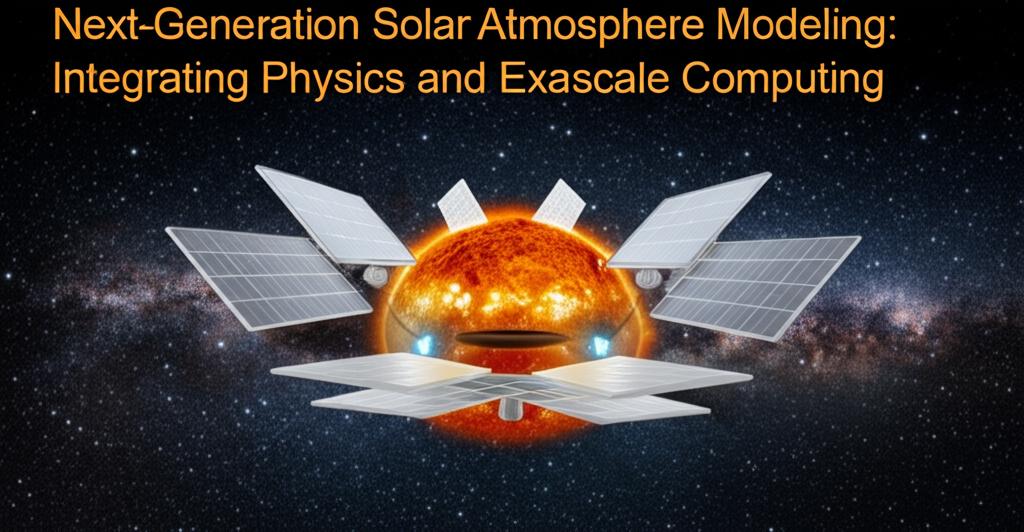The quest to understand the Sun's intricate and dynamic atmosphere is entering a new era, propelled by the convergence of sophisticated physics and the immense power of exascale computing. This synergy promises to unlock unprecedented insights into solar phenomena that directly impact Earth, from satellite operations and space missions to terrestrial technologies.
A significant new initiative in this domain is the Solar Atmospheric Modelling Suite (SAMS) project, a five-year, £5 million endeavor funded by the UK's Science and Technology Facilities Council (STFC). Led by the University of Exeter, in collaboration with the universities of Warwick, Sheffield, and Cambridge, SAMS aims to develop a next-generation, open-source modeling tool. This tool will be capable of simulating the entirety of the Sun's atmosphere, from the visible surface (photosphere) through the chromosphere and out to the corona. The goal is to capture the complex interplay between the Sun's radiation and the diverse conditions across its atmospheric layers, a feat no current model can fully achieve.
This advanced modeling capability is crucial for interpreting the wealth of data from new and upcoming solar observatories. Moreover, it addresses a critical need to understand the physical processes driving solar activity like flares and coronal mass ejections, which can have significant disruptive effects on our technologically dependent society. The SAMS project is designed to run on a wide spectrum of computing systems, from standard laptops to the most powerful exascale supercomputers, ensuring broad accessibility for researchers worldwide.
The development of such comprehensive solar models presents considerable challenges. Accurately representing the diverse physical processes and their interactions across different scales requires innovative numerical approximations and models. Integrating these various models and computational approaches into a cohesive system capable of simulating the whole solar atmosphere is a major hurdle. Furthermore, simulating these large-scale systems dynamically over extended periods necessitates the immense processing power offered by exascale computing – systems capable of performing a billion billion calculations per second.
The move towards exascale computing is a global effort. For instance, the "WHOLE SUN" project, funded by a Synergy grant from the European Research Council (ERC), brings together leading solar physicists from the UK, France, Norway, and Germany. Their objective is to develop numerical models of the entire Sun, leveraging advances in supercomputing to understand the Sun as a coherent whole, from its internal magnetic field generation to its external atmospheric phenomena and their impact on the Sun-Earth connection. Similarly, the Rosseland Centre of Solar Physics (RoCS) in Norway has secured significant processing time on the LUMI supercomputer, one of the world's most powerful, to conduct global magnetohydrodynamic (MHD) simulations of the solar convection zone.
These initiatives underscore a broader trend in scientific computing. The Exascale Computing Project (ECP) in the US, which ran from 2016-2024, was a massive undertaking to develop an entire exascale ecosystem, including application codes, software technologies, and deployment mechanisms. Such projects are revolutionizing scientific domains by enabling simulations of unprecedented resolution and complexity. For solar physics, this means moving beyond previous limitations where the achievable temporal and spatial resolution was often insufficient for accurate predictions.
The development isn't solely focused on raw computing power. There's also a significant emphasis on creating robust, open-source software with detailed, physics-based documentation to promote ease of use and global collaboration. Training the next generation of solar researchers and research software engineers in these advanced simulation techniques and the complex physics governing the Sun's atmosphere is another vital component of these projects.
Furthermore, the integration of Artificial Intelligence (AI) and Machine Learning (ML) with high-performance computing is emerging as a powerful approach. These technologies can help in consolidating various models and observational data, accelerating simulation capabilities, and leading to more accurate predictions by allowing the inclusion of more physical effects like heating, radiation, and thermal conduction in global coronal models.
In essence, the drive towards next-generation solar atmosphere modeling is a multifaceted effort. It combines cutting-edge physics, the development of sophisticated open-source simulation tools, the harnessing of exascale computing power, and the cultivation of a skilled research community. The ultimate aim is to achieve a step-change in our understanding of how the solar atmosphere works, enabling better predictions of solar activity and its far-reaching consequences.

